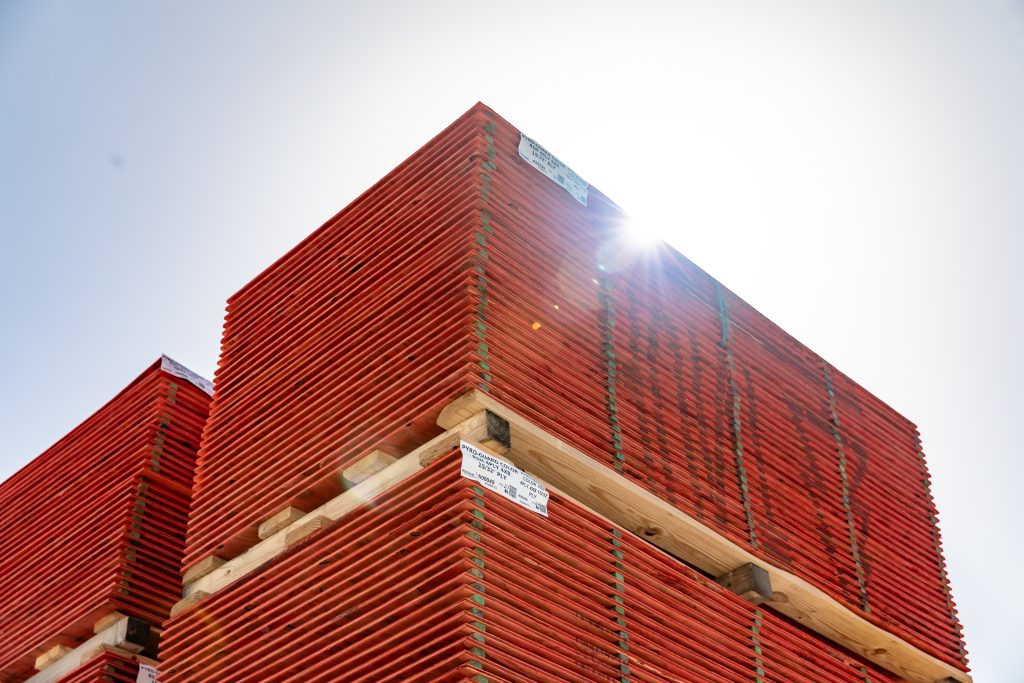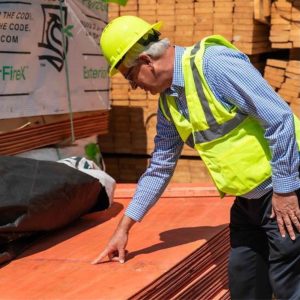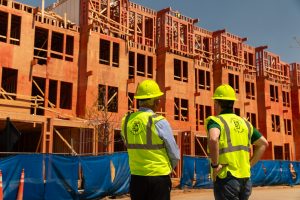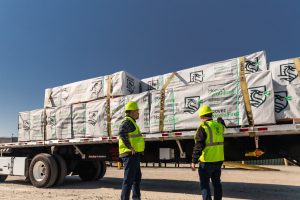Fire-retardant-treated wood (FRTW) now plays an indispensable role in modern construction, but that wasn’t always the case. Our new white paper, Fire-Retardant-Treated Wood: An American Innovation, traces the material’s fascinating journey from its early origins to its essential status in today’s fire-safe building practices.

Written by Dr. Dave Bueche, Hoover’s Director of Fire & Life Safety Codes, the white paper features rare historical images and a detailed chart of FRTW’s many applications.
“This white paper is a tribute to an essential building material that has quietly shaped the safety of American structures for over a century,” said Dr. Dave. “As we celebrate Hoover’s 70th year, we wanted to highlight FRTW’s enduring impact and its potential for the future.”
The story of FRTW began in the 19th century with pioneers like Max Bachert, who commercialized fire-retardant wood treatments in the 1890s. Initially used by the U.S. Navy and later by the City of New York, FRTW quickly became a staple in construction, especially as building codes evolved to prioritize fire safety in high-rise structures. The demand surged during World War II, as the military required FRTW for crucial infrastructure. This expanded the industry beyond its roots in the New York area, solidifying FRTW as a critical material across the United States.
Today, FRTW is more relevant than ever.
With increased awareness of fire safety, especially in wildland-urban interface zones, FRTW is specified in a wider range of structures, from schools and hospitals to data centers and even single-family homes.
Beyond its protective qualities, FRTW aligns with modern building codes and sustainability standards, bridging the gap between safety and eco-friendly practices. Its versatility allows it to be used in various settings, from scaffolding in nuclear facilities to high-rise residential buildings, ensuring robust fire safety measures across diverse environments.
This white paper provides a comprehensive overview of FRTW’s development and showcases its applications in our daily lives. By understanding the history, technology, and evolving role of FRTW, readers can appreciate the significance of this material and its potential to protect lives and property in the years to come.
Explore how fire-retardant-treated wood has become a cornerstone of safer, more resilient construction. Click through to read the full white paper and discover the legacy and future of this essential building material.

About Dr. Dave Bueche
Dave Bueche, Director of Fire & Life Safety Codes at Hoover Treated Wood Products, is a leading authority on fire-retardant-treated wood. With 40 years of experience, he’s supervised construction projects, managed associations, led research, and taught courses. His team develops product applications, sets standards, and promotes fire-retardant-treated wood in construction. Active in ASTM, ICC, NFPA, SFPE, SWST, and past board member of the Forest Products Society, he serves on UL’s Standards Technical Panel and ASTM/NFPA committees. Bueche’s extensive publication record and conference presentations attest to his expertise in advancing fire safety in construction.



